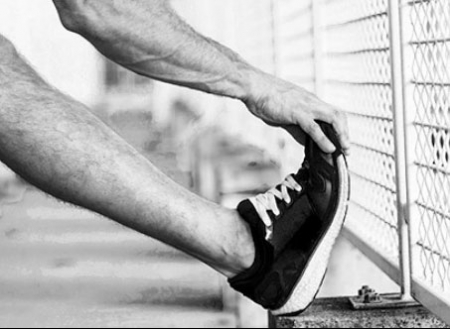
It seems as though the nice summer weather has finally found us here in Wisconsin! With the long-awaited warm weather comes the desire to maximize weekends for outdoor physical activity. It is at this time of the year that we start seeing the ‘weekend warriors’ of Wisconsin. Working, particularly in a sedentary fashion, all week and saving the physical activity for the weekends can be a recipe for disastrous injuries as the body is not being regularly conditioned, strengthened, and stretched, which is the magical combination for injury prevention.
One of the most common ‘weekend warrior’ injuries we see is the Achilles tendon rupture. The Achilles tendon attaches the calf muscle to the calcaneus, or heel bone, and is the thickest tendon in the body, though that characteristic doesn’t prevent it from being injured. Most often, this is an acute injury identified by one moment during activity when someone pushed off their foot, felt like someone kicked them in the ankle, and fell to the ground only to realize no one was behind them. Upon standing up, they realize they lack the ability to ‘toe-off’ when they walk, so they limp off to their car and drive to Orthopaedic Associates of Wisconsin, where excellent care awaits them.
Upon arriving at our clinic, often times an xray or two may be taken to make sure no fracture occurred at the time of injury as well as to assess any Haglund’s deformity that may be present. Such a bony deformity on the back of the heel could make someone susceptible to Achilles tendinitis, bursitis or rupture. If you present with such a deformity, your surgeon would shave down that bone during your surgery to help prevent further exacerbations as time goes on. In addition to xrays, your surgeon will have your lower leg placed in a splint to prevent the area from sustaining further damage prior to your repair. The details of the surgery will be discussed and scheduled. This is an injury for which we typically recommend surgical management to regain normal function as the body does not heal and repair that tendon well on its own.
An Achilles repair includes making an incision along the tendon, re-attaching it to its anatomical insertion site on the calcaneus using sutures, and then closing the surgery site in a layered fashion with the most superficial layer being closed with sutures that will require later removal. Your surgeon will then place you in a short leg posterior plaster compression splint similar to the splint applied prior to surgery. The positioning of your ankle will be plantarflexed, or with toes pointed like a ballerina, to allow that tendon to heal. At your post-operative appointment, your splint and sutures will be removed and you will be placed in a traditional fiberglass cast for continued immobilization as the tendon heals. After about a month, you will be transitioned from the cast to a walking boot with a heel lift until you regain normal motion of the ankle with regular physical therapy. As therapy progresses, you will transition into normal foot attire and increase your activity under the supervision of your surgeon until the foot and ankle feel normal. Though we don’t recommend the ‘weekend warrior’ lifestyle, it is certainly not out of reach after this injury. Our excellent surgeons will return you to your normal activities (whatever they may be) once again!
This blog is written by one of our very own-Morgan. She is a certified athletic trainer working as a medical assistant with our providers each and every day in our clinic. She obtained a bachelor's degree in athletic training from Carroll University in Waukesha and a master's degree in Kinesiology from Michigan State University. She is excited to bring you updates and information about the happenings at OAW.

